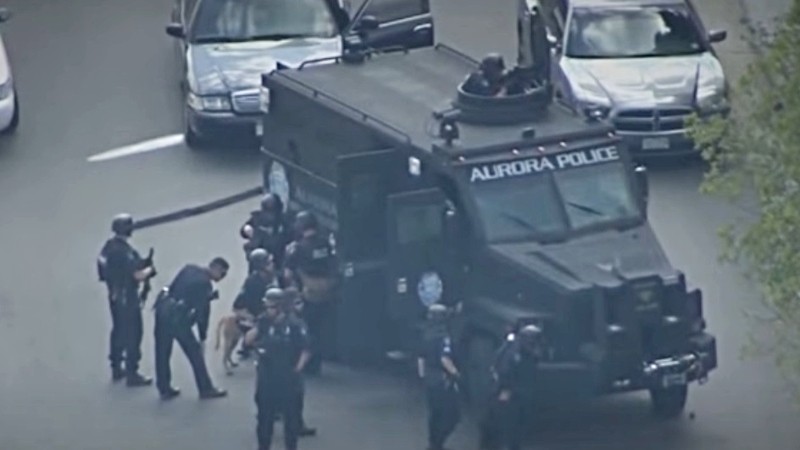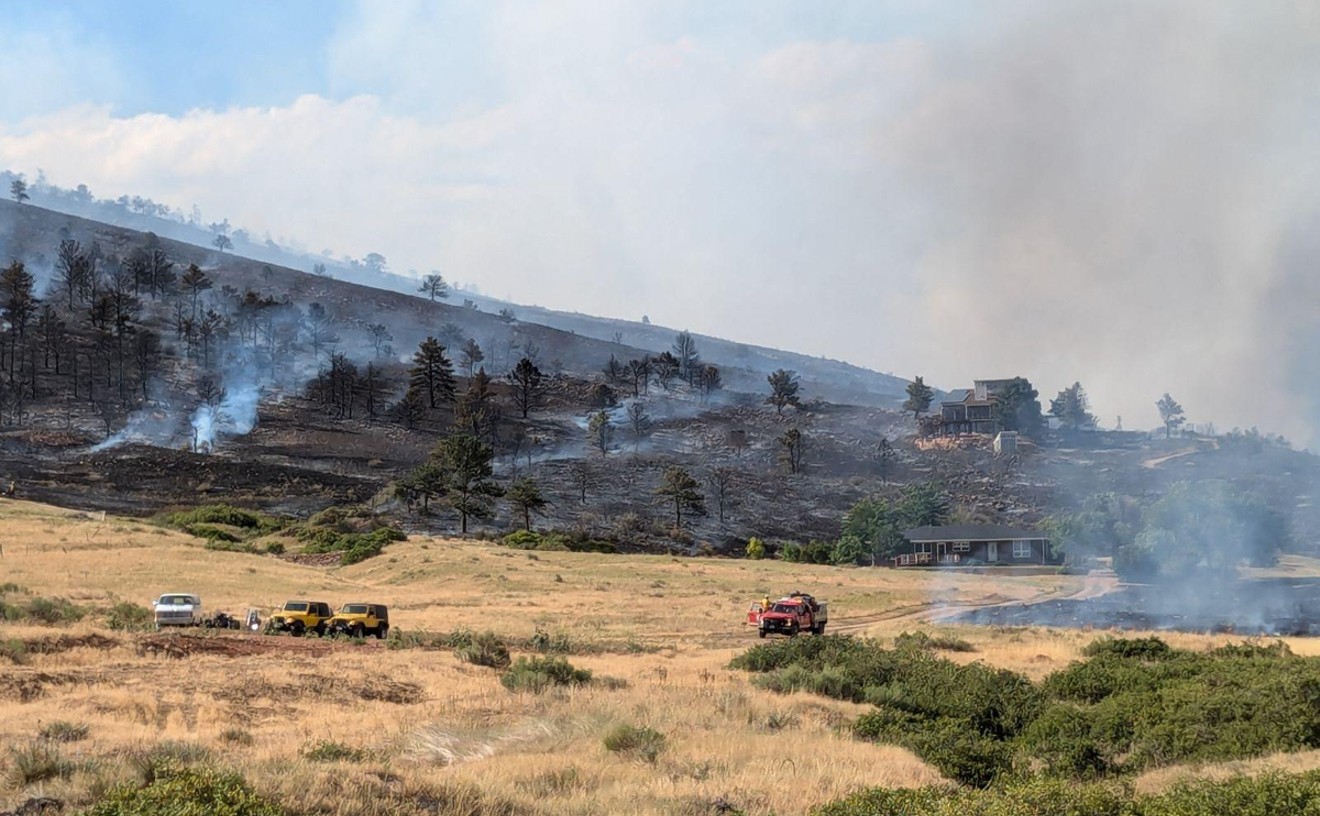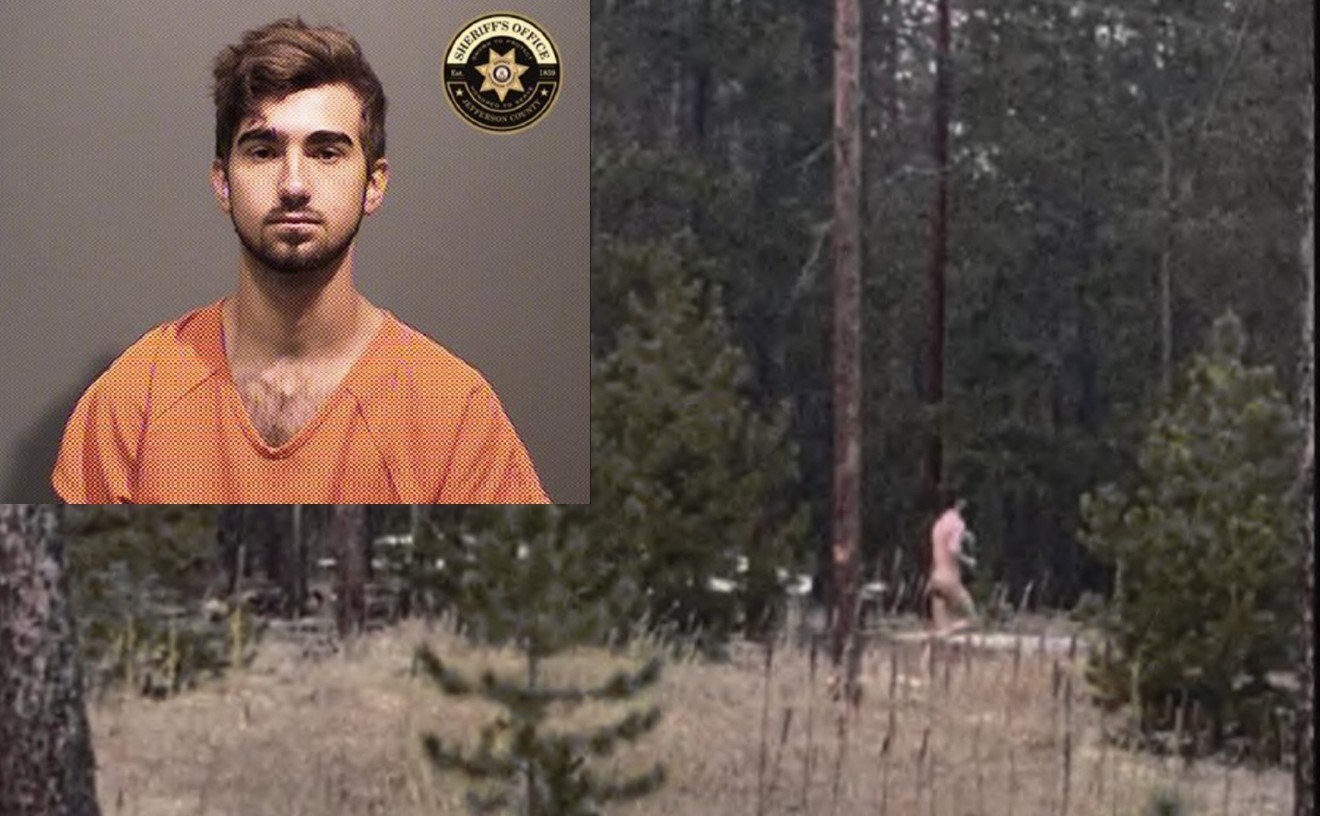Update: On September 10, Aurora City Council's Public Safety, Courts & Civil Service committee turned thumbs down on two proposals from Councilman Juan Marcano related to what he described as "weapons of war" for the Aurora Police Department. Marcano plans to tweak the measures and reintroduce them at a future date. In the meantime, the committee is allowing a related proposition from councilmember Curtis Gardner to be discussed at a future study session — a necessary precursor to a hearing before the full council. Gardner's plan would require council approval before the city could obtain various kinds of equipment, including military gear, from the federal government. Continue for our previous coverage.
Original story, posted September 2: The Aurora Police Department is currently being sued over a June 27 rally at which musicians playing violins in tribute to Elijah McClain were among hundreds of people rousted by cops deploying chemical agents while outfitted for battle, as if they were engaged in war rather than trying to keep the peace.
Now, three Aurora City Council members are trying to help differentiate local police from soldiers by way of twin proposals to end the community's participation in a program to obtain armaments designed for military operations and to prohibit the use of many, if not most, of them against ordinary citizens. The bills are scheduled to be heard during the September 10 meeting of Aurora's Public Safety, Courts & Civil Service council committee.
According to Ward IV's Juan Marcano, who's sponsoring the proposals along with Ward I's Crystal Murillo and Ward V's Alison Coombs, the mere presence of this gear can intensify conflicts — whether it's used or not.
"When you see police departments treating people like enemy combatants, it makes sense that the next time, they show up with helmets, because they might be hit in the head with a canister," Marcano says. "So my goal is to de-escalate and demonstrate good faith to the community."
At the center of the Marcano-Murillo-Coombs offerings is the 1033 Program administered by the Defense Logistics Agency, part of the U.S. Defense Department. At the dawn of the 1990s, Congress "authorized the transfer of excess DoD property to federal, state and local law enforcement agencies," the DLA's website notes, with a focus on "bona fide law enforcement purposes — particularly those associated with counter-drug and counter-terrorism activities."
Among the items obtained by the Aurora Police Department since then include M16 patrol rifles and what's described as a "Mine-Resistant Ambush Protected vehicle," shorthanded as an MRAP. But Marcano feels these tools can create more problems than they prevent.
"Part of this relates to a sort of culture shift since the 1033 Program began, coinciding with the training in how to use these weapons," he says. "In these warrior-cop trainings, they basically teach officers to fear for their lives in every interaction, and that creates a viewpoint where a lot of folks they interact with, and specifically communities of color, are seen as the enemy. But this doesn't just impact communities of color when SWAT raids and gas are used for usually low-level, non-violent drug offenses and things like that. It also leads to a lack of trust overall. As militarization has increased, trust has decreased for the general public."
To that end, he continues, "we want to show good faith to the community that the Aurora Police Department isn't going to regard our residents as an occupying force, and that officers are going to return to being more traditional peace officers rather than being so heavily armed and having patrol rifles in every vehicle or use an MRAP whenever there's a protest."
To address these matters, Marcano and company have assembled what they refer to as the 1033 Procurement Prohibition and Divestment ordinance and the Chemical Weapon Prohibition and Divestment ordinance. If approved, the edicts would require use-of-force changes for the Aurora Police Department related to tear gas, smoke and more — and while Police Chief Vanessa Williams has declined to comment on the measures prior to their introduction, she has issued a statement: "I do believe an educated discussion with council needs to occur about how these non-lethal tools protect the community as a whole and prevent the escalation of violent encounters."
From a political standpoint, Marcano takes pains to distinguish between the proposed Aurora ordinances and Denver City Council member Candi CdeBaca's unsuccessful recent effort to transform the Denver Police Department into a so-called peace force, in which many officers would have been disarmed.
"This is much more targeted," he contends. "I'm not trying to disarm police. They would still have their standard service weapons and the personal-sized pepper spray canisters they are issued. What we're really trying to do is get rid of the collateral-damage aspect with the use of tear gas and foggers, which is especially relevant when you look at what happened at the violin vigil. I'm told a fifteen-year-old girl got caught up and misted, and several of my constituents in the vicinity got pushed back into the parking lot."
He adds: "I interpreted the way the chief explained what happened is depicting it as collateral damage, and that's not acceptable. We need to reimagine what policing looks like in our city, and in our country."

Audio By Carbonatix
[
{
"name": "Air - MediumRectangle - Inline Content - Mobile Display Size",
"component": "12017618",
"insertPoint": "2",
"requiredCountToDisplay": "2",
"watchElement": ".fdn-content-body",
"astAdList": [
{
"adType": "rectangle",
"displayTargets": "mobile"
}
]
},{
"name": "Editor Picks",
"component": "17242653",
"insertPoint": "4",
"requiredCountToDisplay": "1",
"watchElement": ".fdn-content-body",
"astAdList": [
{
"adType": "rectangle",
"displayTargets": "desktop|tablet"
},{
"adType": "rectangle",
"displayTargets": "desktop|tablet|mobile"
}
]
},{
"name": "Inline Links",
"component": "18838239",
"insertPoint": "8th",
"startingPoint": 8,
"requiredCountToDisplay": "7",
"maxInsertions": 25
},{
"name": "Air - MediumRectangle - Combo - Inline Content",
"component": "17261320",
"insertPoint": "8th",
"startingPoint": 8,
"requiredCountToDisplay": "7",
"maxInsertions": 25,
"watchElement": ".fdn-content-body",
"astAdList": [
{
"adType": "rectangle",
"displayTargets": "desktop|tablet"
},{
"adType": "rectangle",
"displayTargets": "desktop|tablet|mobile"
}
]
},{
"name": "Inline Links",
"component": "18838239",
"insertPoint": "8th",
"startingPoint": 12,
"requiredCountToDisplay": "11",
"maxInsertions": 25
},{
"name": "Air - Leaderboard Tower - Combo - Inline Content",
"component": "17261321",
"insertPoint": "8th",
"startingPoint": 12,
"requiredCountToDisplay": "11",
"maxInsertions": 25,
"watchElement": ".fdn-content-body",
"astAdList": [
{
"adType": "leaderboardInlineContent",
"displayTargets": "desktop|tablet"
},{
"adType": "tower",
"displayTargets": "mobile"
}
]
}
]












